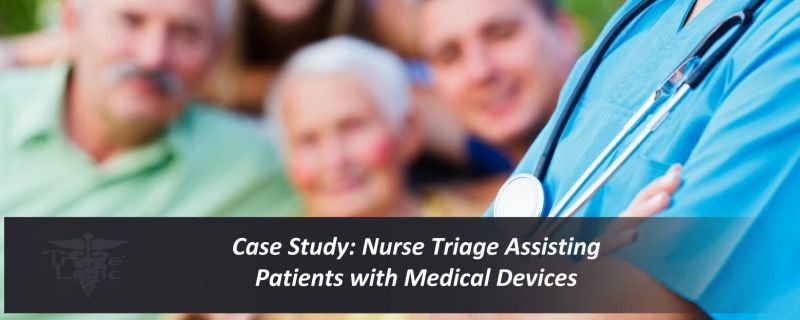Case Study: Nurse Triage Assisting Patients with Medical Devices
Another Potential Life-Saving Incident.
In today’s world, healthcare is fragmented and while technology is improving care, it is also increasing the complexity of maintaining and using medical devices. In addition, as a provider, you want to ensure that your patients receive quality care 24/7. Offering your patients an after-hours nurse triage service serves as an extension of your practice to help your patients troubleshoot issues and determine what level of care or follow-up is required.
Medical devices can range from simply monitoring a patient’s vitals to more advanced interventions. For example, there are a lot of available technologies for glucose monitoring, in fact, some devices are so advanced that they actually act as the pancreas and automatically dispense insulin in a way that mirrors that of an actual pancreas. With all of this new technology, sometimes patients have trouble determining whether their device is just having a simple glitch or it is a life-threatening alert. The following is a case study of a time when one of TriageLogic’s nurses used her training and dedication to assist a caller who was having trouble with his defibrillator implant.
The Call
One Saturday afternoon, Beth received a call from Jerry¹, an anxious 75-year-old man with a history of a heart attack, high cholesterol, and a cardioverter defibrillator implanted in December 2016. He was calling his physician’s nurse triage line because his 2-year-old grandson had accidentally turned off his defibrillator monitor and now the monitor box was flashing with a yellow signal.
After Beth confirmed that Jerry was not having any emergent symptoms, she started troubleshooting how she could help him. The patient had already tried looking in the manual that came with the defibrillator but it did not mention what to do for his specific situation. Beth asked for the name of the company that provided the device and then looked up a customer service number.
The Follow-up
Instead of giving this phone number to the patient, Beth took the extra few minutes to call the company herself. She figured having the information straight from the company would be the safest way to help Jerry. She reached a non-clinical representative that was manning the phones over the weekend. This person assured Beth that the flashing yellow light was nothing to worry about and the patient should follow up with his physician the next business day.
However, the little instinctual voice inside Beth asked, “while the yellow light was flashing would the device be able to provide the life-saving electrical stimulation?” She decided to keep troubleshooting and try a few more options before calling the patient back with news to follow up with his doctor in two days.
Beth tried to call the office manager at Jerry’s practice, hoping that they had worked with this device before and could offer reassurance or a better option than waiting. Though Beth’s shift was ending soon, she did not want to close this call out or hand it off to another nurse until she had an answer. Since she had not heard back from the office manager, she paged the on-call physician. The doctor called her right away and told Beth that the patient needed to be seen in the Emergency Room.
The Conclusion
Thanks to Beth’s persistence, this patient was seen in the Emergency Room and his device was reset. Jerry was discharged from the hospital that same night and did not have to worry about his device not functioning properly. This patient had a reliable resource to troubleshoot a potentially serious issue with his medical device.
For many patients, their only options when the office is closed is to rely on an internet search engine or needlessly going to the ER. Having a quality after-hours nurse triage service for patients ensures the continuity of care with the advice that they are getting. If your practice would like to provide your patients with an after-hours nurse triage service to ensure that your patients have a reliable contact to manage their medical devices, contact us or set up a demo to learn about how our nurses can help your patients.
¹ Names and other identifying information have been changed to protect the privacy of the individual.
What to Read Next: Triaging Heart Attacks Over the Phone





